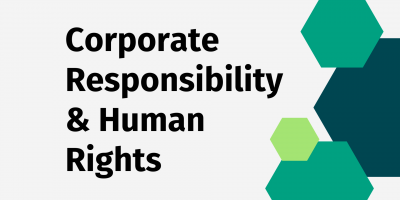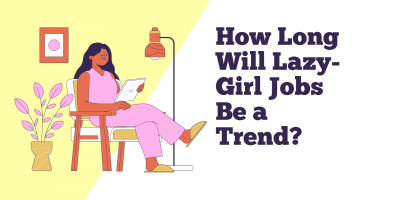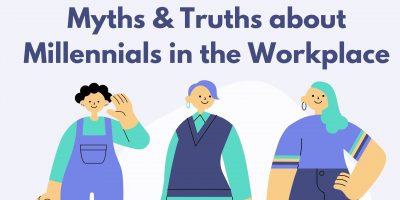
Corporate Responsibility & Human Rights
When we talk about human rights violations, we often picture distant places with dictatorial regimes. But the truth is, human rights concerns aren’t confined to remote corners of the globe.

Favoritism in the workplace is an invisible threat, hidden behind subtle actions but felt by everyone.
It creates an imbalanced work environment in which employees are treated based on personal associations, preferences, and, in some cases, biases.
Unlike workplace friendships, which make a job more enjoyable, this practice of playing favorites can erode the foundation of a fair and productive workplace.
There are different types, different signs, and many examples of favoritism in the workplace, all of which we explore in this Shortlister article.

Let’s start by answering the question of what is favoritism in the workplace.
Workplace favoritism involves treating some employees more favorably than others, often without a legitimate or justified reason. This preferential treatment can be due to personal relationships and subjective opinions rather than the employee’s performance or qualifications.
As a result, the favored individual receives more career opportunities and preferential treatment.
A deeper look into the phenomenon of favoritism reveals that, although rooted in antiquity, this socio-psychological practice is relevant today on three levels: macro, meso, and micro.
Workplace dynamics are typically studied on meso levels, where favoritism often leads to informal hierarchies in which the “favorites” are awarded privileges. These employees exhibit personal traits such as superiority over others, high energy and activity, and a desire for power and prestige.
Although favoritism can help leaders gain influence and strengthen their control over a team, its dual nature is more evident in holding back creativity and opportunities for those not in the “favorite” group.
As a result, it creates an unequal power dynamic, leading to a barrier that limits organizational growth.
Favoritism is a broad term representing multiple forms of in-group prejudice, including nepotism and cronyism. While often overlapping, these practices are all rooted in unfair treatment.
Understanding what each means and where it derives from can help organizations recognize and address the underlying causes.
A CEO hires a family member for a senior position in the company despite their lack of experience over other, more qualified candidates – this is a classic case of nepotism in the workplace.
By definition, nepotism refers to favoring relatives or family members, especially in hiring, promotions, or awarding opportunities, regardless of their qualifications or merit.
Research on nepotism’s impact on the job market shows that more than one-third of Americans work for a parent’s firm before 30.
This practice often results in higher salaries for these workers, or up to 20% more than they would earn otherwise.
The research also highlights that nepotistic hires may stay longer but often lack the qualifications to be promoted elsewhere, reducing company access to top talent.
As a result, this hiring practice can decrease productivity, hinder diversity, and perpetuate inequality of opportunity.
When that same CEO uses their position of power to favor close friends, associates, or people with whom they have a personal relationship regardless of their qualifications, then we’re talking about cronyism.
While it may seem harmless in the short term, cronyism can have serious long-term consequences for an organization, especially if the hired individual has poor skills and is unfit for the role.
For example, a study on the outcomes of organizational cronyism demonstrates that this practice creates perceptions of unfairness among employees, leading them to engage in damaging behaviors as a response, such as workplace deviance, inefficiency, and organizational cynicism.
As “cronies” tend to gain more advantages due to personal ties with managers, this undermines merit-based performance and perpetuates a cycle of inequality.
Finally, when the CEO gives preferential treatment to an employee based on personal or unconscious bias or other subjective reasons, that’s favoritism at its core.
For example, they consistently promote men to senior roles, even when women are equally qualified or more capable, or they reward employees they like rather than those who deserve it most.
This practice is not “exclusive” to individuals in power and can also happen between co-workers.

Favoritism can manifest in different ways, ranging from subtle social exclusions and biased decision-making to more overt acts of discrimination.
These signs can be challenging to spot at first, but some of the most common indicators include:
Unfortunately, one reason favoritism is dangerous is that it’s often very challenging to notice, despite the presence of one or more of these signs.
Socializing and forming relationships with colleagues are natural aspects of human behavior. People tend to gravitate toward others with shared interests or similar personalities, and this can create the appearance of favoritism, even when there’s no intention of being unfair.
The key is balance – when social connections start to overshadow professional fairness, that’s when favoritism takes root.
Given its complexity, a common question is whether favoritism in the workplace is illegal.
While preferential treatment isn’t inherently illegal, it can become so under specific circumstances, such as when it leads to discrimination or violates workplace regulations.
For example, if a manager constantly assigns a co-worker they’re closer with to lead a project, that could be unfair – but it’s not illegal. As long as the other employees are still given fair opportunities and there’s no discrimination involved, this case of favoritism is not breaking any laws.
However, even when it doesn’t cross into illegal territory, favoritism is still very much unethical – a reason enough for companies to try to prevent it before it becomes a much larger issue.
Favoritism becomes illegal when:
The good news is that laws exist to protect from employment discrimination and other prohibited practices, such as Title VII of the Civil Rights Act of 1964, the Age Discrimination in Employment Act of 1967, and the Equal Pay Act of 1963.
The Equal Employment Opportunity Commission (EEOC) enforces these laws, ensuring fair workplace treatment.
Favoritism usually occurs between a person in power (CEO, senior executive, manager) and a direct report, but it can also happen between co-workers. The following examples illustrate these different contexts.
The modern workplace leans towards meritocracy – a system free of discrimination based on age, gender, and other protected characteristics, where workers are rewarded solely for their achievements.
However, putting this into practice is challenging.
When favoritism exists, it often results in unequal promotions, limited career growth, and fewer training and skill development opportunities.
For instance, an employee might get a promotion or a mentorship opportunity because of their close relationship with the manager, even if others are more qualified or have expressed interest.
In work distribution, favoritism in the workplace commonly appears in how teams or companies assign tasks and responsibilities.
For example, a preferred employee might consistently receive better shifts, easier or more flexible work, or high-profile projects. The opposite can also happen—unfavored workers might be given heavier workloads or menial tasks beneath their skill levels.
Performance management evaluates employees’ work and progress and gives feedback. Whether it’s an annual review or a quarterly performance evaluation, it should clarify job responsibilities, expectations, priorities, and career development.
But what happens when the system is “rigged”?
Favoritism in performance management tends to put some employees on a pedestal, giving them overly favorable evaluations or praise that do not align with their performance. As a result, they enjoy better career opportunities, higher bonuses, or more rewarding projects.
Conversely, others may not receive constructive feedback or recognition for their hard work, leading to career disadvantages and deepening workplace inequity.
Social cliques or exclusive communication (e.g., being included in informal discussions, meetings, and important emails) exemplify workplace favoritism.
Preferential treatment influences how information is shared and who participates in influential discussions and decision-making processes.
As a result, favored employees might be the first to learn about new opportunities, projects, or organizational changes, while others remain out of the loop.
Financial results provide another clear example of favoritism in the workplace.
Better salaries, big bonuses, regular raises – when favoritism plays a factor, these financial rewards often go to people with personal ties to the higher-ups.
For example, someone might receive a bigger raise or bonus simply because they have a close relationship with a senior leader, even if their work isn’t any better than their colleagues.
Consequently, this could lead to unfairness and frustration among employees who feel their hard work isn’t adequately recognized.

After identifying the examples and understanding their impact, we turn to an essential focus concerning employers: how to handle favoritism in the workplace.
The first step is to determine if the behavior fits this description. Due to its complex nature, it can be challenging to recognize whether it’s a preferential treatment or performance-based recognition case.
Therefore, it’s important to encourage open and safe communication, where employees can voice their concerns without repercussions.
Once employees raise a complaint, the next step is to conduct a thorough investigation. When favoritism is suspected but unclear, seeking clarification from supervisors or employees can provide further perspective.
After raising the case, it’s crucial to give HR and management time to address it. Companies should take corrective action to address any inequities if the suspicion is confirmed. Failing to do so can lead to long-term consequences and allow the problem to grow even worse.
An OSU Fisher College of Business study of perceived favoritism reveals a concerning number: 56% of U.S. executives admitted having a favorite when making internal promotion decisions.
Of those, 96% would promote their favorites over candidates with better skills required for the position.
The overall impact of such a widespread phenomenon is exceedingly negative, except for the beneficiaries of favoritism.
According to the report Theorizing Favoritism in the Workplace, non-beneficiaries experience negative consequences, including:
Additionally, as the report shows, perceptions of favoritism often lead to rule-breaking, as workers either seek to restore fairness or exploit their privileged status.
Such behaviors ultimately harm organizational performance.
Companies dominated by favoritism experience higher absenteeism, turnover, and a lack of innovation, all eroding efficiency and competitiveness.
Favoritism in the workplace might seem like a minor issue at first, but after seeing the scope of its impact, there’s no doubt in its ability to disrupt the workplace.
The good news is that companies can take simple steps to prevent it and create a fairer, more inclusive workplace.
However, if prevention is not an option and this preferential treatment is already integrated into the organization, there are also solutions to reverse its effects.
Ensure your HR team is well-trained to identify and address issues promptly. HR consulting can provide additional expertise to develop fair policies and practices, while regular training on bias and communication helps ensure a more inclusive and equitable workplace.
Despite the evolution of the workplace, favoritism remains fundamentally intact.
It still benefits the select few at the expense of the collective, fueling inequality and further dividing employees.
While predicting how workplace dynamics will unfold is impossible, businesses can shape the outcome by prioritizing transparency, fairness, and inclusivity. It’s especially important for remote and hybrid models, as these setups can create challenges in ensuring equal visibility and access to opportunities.
The bottom line is that favoritism in the workplace is unlikely to be eliminated entirely.
Still, with the right attitude, strategy, and awareness, it can be minimized and managed to ensure a fairer environment for all employees.
Content Writer at Shortlister
Browse our curated list of vendors to find the best solution for your needs.
Subscribe to our newsletter for the latest trends, expert tips, and workplace insights!

When we talk about human rights violations, we often picture distant places with dictatorial regimes. But the truth is, human rights concerns aren’t confined to remote corners of the globe.

The “lazy girl jobs” movement isn’t about laziness at all. It’s about drawing a line between self-care and overexertion.

Understand the complexities of the millennial workforce to foster better collaboration and leadership in the modern workplace.

Just like the growing trend of “life coaches” for those interested in self-development, executive coaching has become a valuable training resource for American businesses.
Used by most of the top employee benefits consultants in the US, Shortlister is where you can find, research and select HR and benefits vendors for your clients.
Shortlister helps you reach your ideal prospects. Claim your free account to control your message and receive employer, consultant and health plan leads.